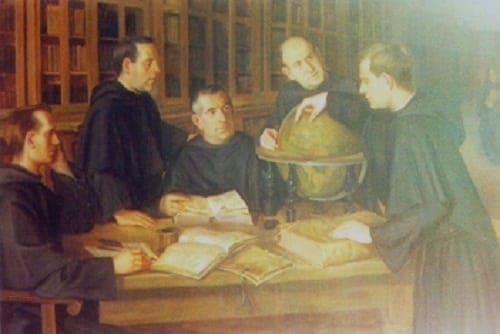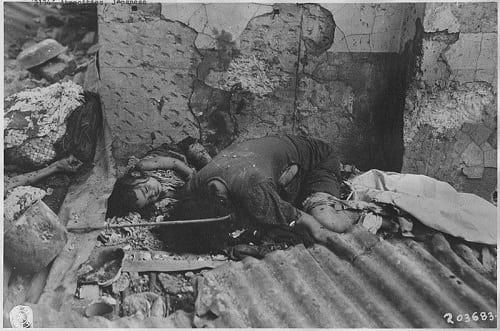6 True Stories From Philippine History Creepier Than Any Horror Movie
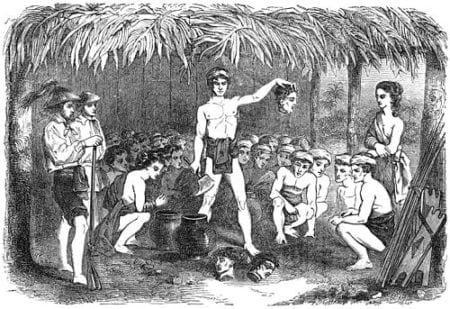
Scary movies always fail to scare me. Not because I dislike the plot or the special effects, but because the history buff in me believes that truth is stranger–and oftentimes more horrifying–than fiction.
Yes, there are a bunch of horror flicks based on true stories, but everyone knows that a “creative license” almost always dictate the final output. So where exactly can you find original, mind-blowing true stories that will give you the creeps? None other than the archives of Philippines’ shocking history.
Also Read: Top 10 Scariest Pinoy Movie Monsters
1. Early Filipino tribesmen literally feasted on human brains ala Zombies
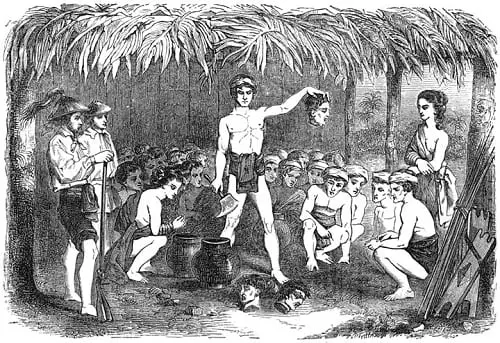
If you think eating brains is something only zombies find appetizing, then wait until you read Paul de La Gironière’s best-selling mid-19th-century travelogue.
Gironière was a French explorer who arrived in the Philippines in 1820. The adventurer in him thought it was a good idea to stay in the country for a while to practice his profession (he was an eye doctor). Soon, he founded the town of Jala Jala in the present-day Rizal province and managed it for almost 20 years until the death of his wife and son.
One day, accompanied by his assistant (aptly named Alila), Gironière decided to explore the mountainous provinces of the north. This was to see for himself what exactly the head-hunting “savages” looked like and how they survived on a daily basis.
First stop was the Tinguians of Abra. Save for their weird odor (which Gironière attributed to the Tinguians’ habit of not removing their clothes), the two visitors found the ethnic group nicer than they expected. And then came the biggest surprise of their lives: A few days after their arrival, Gironière and Alila were invited to take part in a “brain feast”–a traditional celebration held every time the group won a battle against a rival tribe.
READ: The 5 Horrifying Pinoy Cannibals
As described by Gironière, the bizarre tradition starts with the Tinguian chiefs and warriors sitting around a “sacred” space where a large vessel of basi (sugarcane wine) was placed, along with several decapitated heads of their enemies.
After giving a short victory speech, each of the warriors would then get a severed head for himself, crack it open using a hatchet, and take out the brain. As if it’s not gory enough, the young Tinguian girls would then pound the brains until they were fine enough to be mixed with the sugar cane wine.
When the concoction is ready, all the participants would each get a taste of it and pass it around for the whole tribe to enjoy. Fearing that the Tinguians would kill them, Gironière had no choice but to partake in what he would describe as an “infernal beverage.”
Although some scholars dismiss the “brain feast” as a possible work of fiction, history suggests otherwise. American explorer Dean Worcester described similar ritual among the Kalinga, while William Alexander Pickering–in his book “Pioneering in Formosa” (1898)–commented that Formosan savages “mixed the brains of their enemies with wine, and drank the disgusting mixture.”
2. Strange events foretold the gruesome murder of an Augustinian friar in 1617
If all else fails, kill your boss. This was probably the motto of the Augustinian friars who conspired to kill their superior in 1617.
Fray Geronimo de Salas, the newly-elected Augustinian provincial in Intramuros, became the first target of these secret assassins. Only twenty days after his appointment, Salas was poisoned to death.
His successor, Vicente de Sepulveda, was not likable either; the new provincial’s rigid leadership didn’t sit well with his enemies who then came up with an assassination plot against him.
But Sepulveda, unlike his predecessor, couldn’t be put down by simple poisoning. In fact, the lucky friar managed to survive eight poisoning attempts during which a ground glass was mixed with his chocolate, food, and even the wine he consumed at Mass.
Related Article: 9 Things You Didn’t Know About The Catholic Church In The Philippines
And then came a disturbing omen: visitors of San Agustin church had seen a white cat suckling three mice. Once they had grown fat enough, the poor animals were devoured by the feline. The superstitious believed that the three mice symbolize death, and since Salas and an archbishop of Manila recently died, it wouldn’t take long before another one bites the dust.
A few months later, their predictions turned out right.
Upon realizing that his initial plans were not working, Fray Juan de Ocadiz–the mastermind–sought the help of three accomplices to ensure the death of Sepulveda. After the provincial’s secretary provided them with a duplicate key to Sepulveda’s cell, the assassins proceeded with their agenda. They allowed the hapless victim to repent of his sins before strangling him and twisting his head to ensure he had no chance to survive.
Investigations by the Royal Audiencia ensued, and all Augustinians were asked to kiss the hand of Sepulveda’s corpse. When it was Ocadiz’s turn to pay his last respects, the guilty friar trembled at the sight of Sepulveda’s finger that seemed to be pointing towards him.
In the end, Ocadiz confessed his crime. He and the other two accomplices were hanged, while the fourth suspect escaped to Rome.
Interestingly, Ocadiz’s execution was predicted by his own mother twenty years earlier. In the book “The Governor-General’s Kitchen” by Felice Prudente Sta. Maria, it is said that as Doña Ana of Austria “watched the hanging of an Augustinian friar who wanted to marry her off to a pastry cook who would then become King of Portugal, she fancied that it was her son as an Augustinian in the noose instead.”
3. The chilling history behind Malabon’s demonic tombstone
Don Simeon Bernardo didn’t believe in God. He wanted everybody to know about it, so much so that he built a hair-raising monument of a devil triumphing over an angel. This sculpture now guards the tomb of Don Simeon who died of a heart attack in 1934 at the age of 65.
Since then, the now-famous tombstone in Tugatog, Malabon has been the subject of a lot of legends perpetuated by people who never even knew its real origins.
It only took an interview with one of Don Simeon’s surviving children to figure out the history behind the bizarre tombstone. In a traumatizing episode (at least for me) of the ’90s TV show Magandang Gabi Bayan, Atty. Sumilang Bernardo said that her father was a victim of Spanish oppression. Accused of being a revolutionary, Don Bernardo was arrested by the Guardia Civil and subjected to unimaginable punishments like forcing him to drink a pail of water containing human excreta.
Also Read: 7 Most Unintentionally Terrifying Statues In The Philippines
One day, Don Bernardo realized he’s had enough. He turned his back on the Catholic religion that had completely penetrated the Filipino society. For him, the good didn’t exist in the world anymore and the Catholic religion was a mere tool of the colonizers to put the Philippines under its control.
Aside from creating the now-infamous statue, Don Bernardo also made all his 10 children promise to never believe in God. Out of these 10, only three remained atheists–including Atty. Sumilang–while the rest converted to Roman Catholicism upon marriage.
4. The Exorcism of Clarita Villanueva
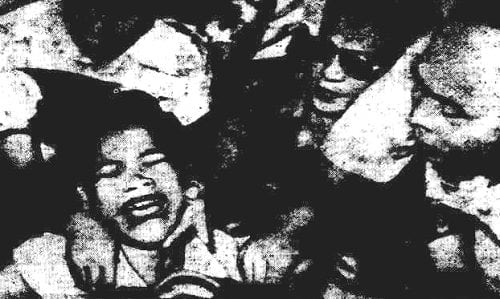
In 1953, 18-year-old Clarita Villanueva of Bacolod City hit the headlines both here and abroad. But unlike movie stars, the probinsyana became famous for what would turn out to be one of the most ‘legit’ cases of demonic possession in recorded history.
Villanueva came to Manila after her parents died. She first worked as a maid before eloping with her lover. When she found out that her partner was already married, she immediately broke off with him and worked as a dancer.
One night, while she’s on her way home after watching a late-night movie, Clarita was picked up by the police who suspected her of being a vagrant or homeless. That became her ticket to the Bilibid Prison.
After a few days, her stay in the prison turned from mundane to hellish. The young girl claimed she began seeing strange creatures who would bite her several times in different parts of her body. She described ‘The Thing’ as two terrifying creatures, with the bigger one characterized by curly hair, two fangs, and large eyes.
During the attacks, Clarita would often scream, become hysterical, and lose consciousness. But it was the bite marks that sent chills to those who had personally witnessed how the young girl struggled with what others described as “invisible vampire.”
No less than tough guy Mayor Arsenio Lacson, who visited the demon-possessed Clarita in the city morgue, claimed that he saw bite marks appear out of nowhere on the victim’s hands. Mariano Lara, the medical examiner, was scared out of his wits when he saw firsthand the demonic attacks.
He also described the bite marks as otherworldly because they’re too large, round (human bite is elliptical), and seemed to have been made by molars.
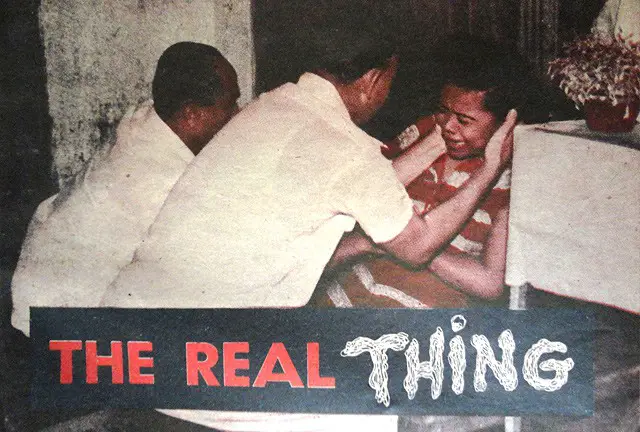
READ: 10 Notorious Crimes of the 1960s That Shocked The Philippines
Medical experts struggled to come up with a concrete explanation. While others suspected Clarita to be suffering from insanity or a mental disorder known as ‘hysterical fugue,’ more people were convinced that it was a phenomenon that defies scientific explanation. In the end, hopelessness urged them to finally resort to exorcism to drive demons out of Clarita’s body.
Rev. Lester Sumrall heeded the call. Assisted by two other Protestant ministers, Sumrall used the power of prayers to overcome the invisible devils. The following is an eyewitness account of Clarita’s exorcism:
“…Clarita’s countenance changed. She became wild-eyed and screamed at the minister before her, telling him to go away…At intervals, Clarita was meek as a lamb and, at the prodding of the minister, said that she liked Jesus Christ. The very next moment, however, she grew violent and cursed God and told the minister to go away…After about an hour, Clarita’s face seemed to soften…At this state, the minister recited the Lord’s Prayer and Clarita followed him. ..She indicated that ‘The Thing’ went out of the window. And the three ministers sang a joyous ‘Hallelujah'”
Thanks to the sensational story of Clarita Villanueva, as much as 150,000 people who were moved by her deliverance reportedly accepted Jesus Christ as their Savior.
5. The ghost of a murdered Filipina came back from beyond the grave to name her killer
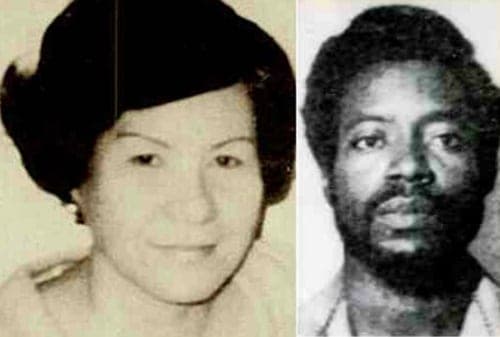
On the night of February 21, 1977, firefighters responded to a call and arrived at a Chicago apartment building to put out a fire.
They discovered that the fire was confined to Room No. 15B of a certain Teresita Basa. When they went inside the room and had the fire under control, they were welcomed by a terrifying discovery: the burned, unclothed body of Teresita Basa covered by a mattress.
Investigators who arrived at the scene suspected that it was a case of rape-murder. Other than a note which reads “Get tickets for A.S.” written by the victim herself, there were no other clues that would lead them to the culprit.
To unravel the mystery of this crime, they had to dig deeper into the life of Basa and figure out who was “A.S.”
Teresita Basa was a native of Dumaguete City in the Philippines where she is now buried. After graduating from Assumption College in Manila, she immigrated to the U.S. in the mid-1960s. Before her death, Basa worked as a respiratory therapist at the now-defunct Edgewater Hospital in Chicago.
As for the real identity of “A.S.”, Detective Joe Stachula had to wait a couple of months before he could get a lead. Finally, he was asked by the Evanston Police to contact a certain Dr. Jose Chua to get more information about Basa’s case. Dr. Chua and his wife Remy, both Filipinos, were hesitant at first but later agreed to share their story after Detective Stachula assured them he’s open to anything.
Dr. Chua claimed that her wife would go into a trance-like state and become possessed by a spirit. That spirit introduced herself as Teresita Basa and went as far as naming her murderer (by the name of Allan Showery) as well as specific proofs–like the jewelry that was stolen from her–and the names (including their phone numbers!) of her relatives that could identify those proofs.
READ: Top 10 Unsolved Mysteries in the Philippines
All these led to the arrest of Allan Showery, an orderly working at the same hospital as the victim and Dr. Chua’s wife. The jewelry that Showery gave to his girlfriend was also positively identified as those owned by Basa, prompting the suspect to give a full confession.
Showery plead guilty, was sentenced to imprisonment, but eventually released in 1983 after only less than five years of serving his sentence.
Did Teresita really come back from beyond the grave to name her murderer? Or was Mrs. Chua aware of the information all along but pretended she was possessed for fear of Showery? We’ll probably never know, but if it was indeed a paranormal phenomenon, this case is one for the books.
6. The horror stories from the Japanese Occupation are worse than you thought
To describe the WWII tragedies that befell Filipinos as “creepy” won’t do it justice. Even calling it “horrifying” is an understatement. Without a doubt, the Japanese atrocities in the Philippines showed us how far humans could go in the name of honor and lust for power.
Jintaro Ishida, a Japanese veteran who served in the Navy during WWII, once shared how his comrades in the Philippines learned to kill innocent civilians–including women and children–as if they were “just killing insects.”
A well in a village somewhere in Lipa, for example, became the final resting place of about 400 Filipinos who were thrown to their deaths. A total of 2,000 people in Calamba were also massacred on February 12, 1945, with the old men strangled to their deaths using a rope because it was “an easier and cheaper way to kill them than with rifles and bullets.”
Recommended Article: 10 Facts About World War II That Never Made It To Your Philippine History Books
The files from the Tokyo War Crimes Trials are even more stomach-turning. It is said that some Japanese were involved in “attempted rape of one female civilian, and attempt to have carnal intercourse with the body of one dead female civilian.”
Another statement by Filipino prosecutor Major Pedro Lopez details the tragic deaths of a mother and her child who were in the wrong place at the wrong time:
“…in February 1945 in the Manila home of Bartolome Pons, a pregnant woman with an 11-month old baby in her arms was shot and killed. The Japanese started to leave, but hearing the baby cry, returned and killed it with two shots.”
We can never turn back the time, but if horror stories such as these are what will convince the youth to look back and reflect on the lessons of the past, then we can prove that history is indeed valuable.
References
Apostol, V. (2012). Way of the Ancient Healer: Sacred Teachings from the Philippine Ancestral Traditions (pp. 96-97). North Atlantic Books.
Beaver Valley Times,. (1953). Manila Mayor Confirms ‘Spook’ Attacks On Girl, p. 8. Retrieved from https://goo.gl/lSAu68
De La Gironière, P. (1854). Adventures in the Philippine Islands. Translated from the French of Paul P. de La Gironière … Revised and extended by the author, expressly for this edition. London: C.H. Clarke.
Johnson, R. (2015). Teresita Basa Killed Today in 1977 – Did She Solve Her Own Murder?. Chicago Now. Retrieved 31 October 2015, from http://goo.gl/IaGhuJ
Mydans, S. (2001). Japanese Veteran Writes Of Brutal Philippine War. The New York Times. Retrieved 31 October 2015, from http://goo.gl/mErzx9
O’Brien, J., & Baumann, E. (1978). Back From The Grave?. St. Petersburg Independent, p. 3-A. Retrieved from https://goo.gl/bx7X1z
Ocampo, A. (2010). Looking Back 2: Dirty Dancing (pp. 58-61). Mandaluyong City, Philippines: Anvil Publishing, Inc.
Ocampo, A. (2014). Looking Back 8: Virgin of Balintawak (pp. 16-17;20). Mandaluyong City, Philippines: Anvil Publishing, Inc.
Roces, A. (2009). The Philippines through the eyes of a Frenchman. philSTAR.com. Retrieved 30 October 2015, from http://goo.gl/obfaia
Sta. Maria, F. (2006). The Governor-General’s Kitchen: Philippine Culinary Vignettes and Period Recipes 1521-1935 (p. 173). Mandaluyong City, Philippines: Anvil Publishing, Inc.
Sumrall, L. (1987). Bitten By Devils. South Bend, Indiana: LeSEA Publishing Company.
FilipiKnow
FilipiKnow strives to ensure each article published on this website is as accurate and reliable as possible. We invite you, our reader, to take part in our mission to provide free, high-quality information for every Juan. If you think this article needs improvement, or if you have suggestions on how we can better achieve our goals, let us know by sending a message to admin at filipiknow dot net
Copyright Notice
All materials contained on this site are protected by the Republic of the Philippines copyright law and may not be reproduced, distributed, transmitted, displayed, published, or broadcast without the prior written permission of filipiknow.net or in the case of third party materials, the owner of that content. You may not alter or remove any trademark, copyright, or other notice from copies of the content. Be warned that we have already reported and helped terminate several websites and YouTube channels for blatantly stealing our content. If you wish to use filipiknow.net content for commercial purposes, such as for content syndication, etc., please contact us at legal(at)filipiknow(dot)net

